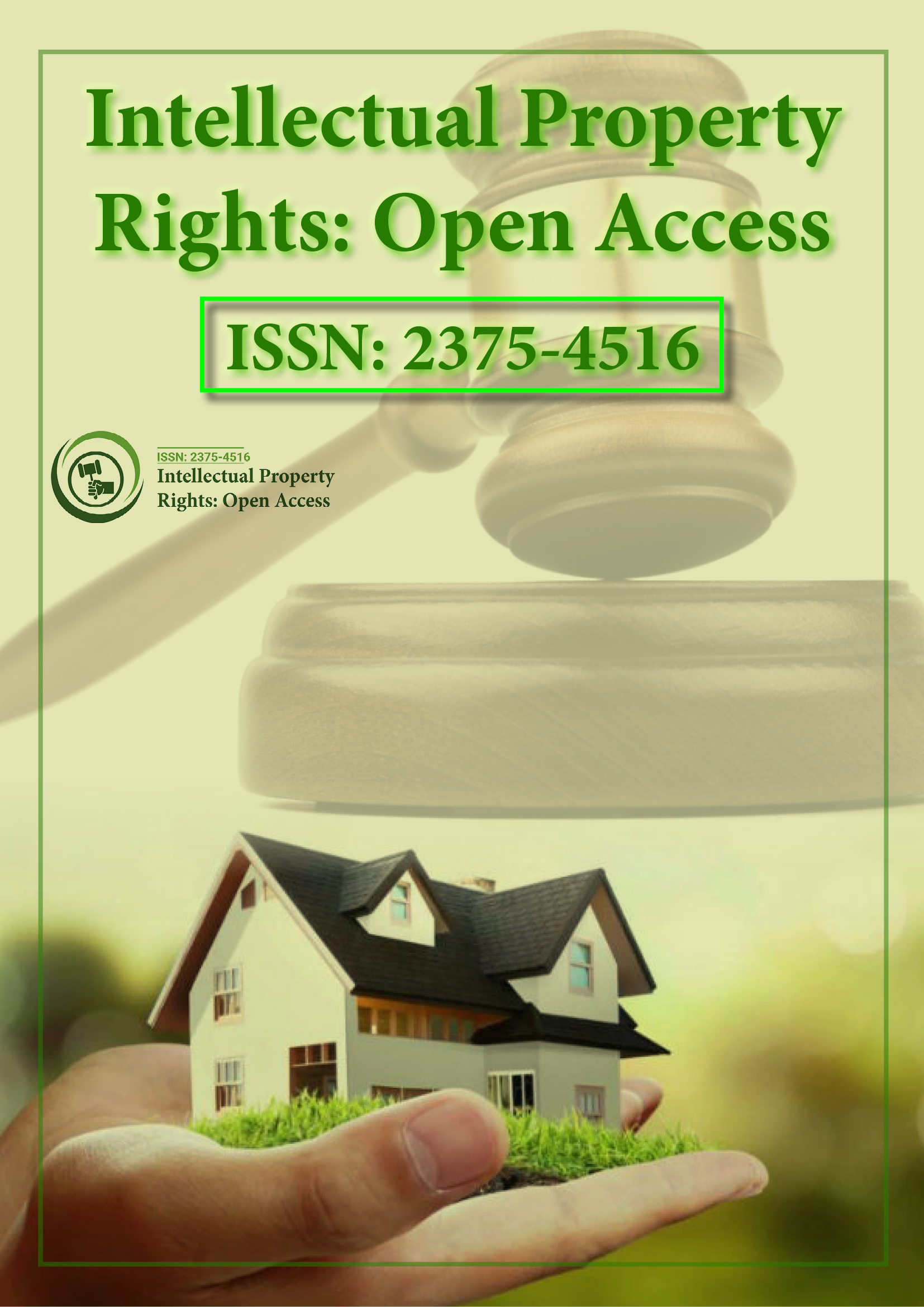Indexed In
- Open J Gate
- RefSeek
- Hamdard University
- EBSCO A-Z
- OCLC- WorldCat
- SWB online catalog
- Publons
Useful Links
Share This Page
Journal Flyer

Open Access Journals
- Agri and Aquaculture
- Biochemistry
- Bioinformatics & Systems Biology
- Business & Management
- Chemistry
- Clinical Sciences
- Engineering
- Food & Nutrition
- General Science
- Genetics & Molecular Biology
- Immunology & Microbiology
- Medical Sciences
- Neuroscience & Psychology
- Nursing & Health Care
- Pharmaceutical Sciences
Commentary - (2022) Volume 10, Issue 4
Intellectual Property Rights: Protection and Management
Grimaldi Michele*Received: 04-Nov-2022, Manuscript No. IPR-22-19486; Editor assigned: 08-Nov-2022, Pre QC No. IPR -22-19486 (PQ); Reviewed: 24-Nov-2022, QC No. IPR -22-19486; Revised: 30-Nov-2022, Manuscript No. IPR -22-19486 (R); Published: 08-Dec-2022, DOI: 10.35248/2375-4516.22.12.213
Description
It is structured around the two main goals of intellectual property law, which are to maintain the integrity of the economic market and advance innovation and artistic creation (with a concentration on copyright, trade secret, and patent protection) (trademark protection and unfair competition law). Each section outlines the economic problem, the key models and analytical frameworks, how economic analysis is applied to specific structural and philosophical issues, how it interacts with other legal systems (like competition policy), how it affects international issues, and how it compares to other methods of addressing the economic problem (such as public funding and prizes in the case of patent and copyright law and direct consumer protection statutes and public enforcement in the case of trademarks).The scope and volume of non-legal writings on the protection of Intellectual Property (IP) were constrained until recently. Since the middle of the 1990s, the situation has significantly changed. Private businesses and governmental institutions, including universities, colleges, and research institutes, have realised the value of Intellectual Property Rights (IPR) and the need for their protection as the importance of information increases.
An summary of the changes in US and foreign IPR regimes that led to the so-called "patent friendly age" opens the survey. Surprisingly, positive reforms in the US IP law cannot be solely blamed for the noticeable growth in the usage of patents in the US. The increased use of patents and other IP instruments has less to do with how well they protect IP and more to do with how well they serve corporate strategies that obstruct competition and provide leverage for cross-licensing. The use and tactics for IPRs in the US, Canada, the EU, Japan, and Australia are outlined in Section 4. It is common knowledge that different IP instruments have varying degrees of importance depending on the industry. Section 5 focuses on IP techniques and tactics utilised in information technology and communications, including computers, software, business procedures, and Internet applications after giving a brief overview of IP in more conventional industries. Only few particular points were highlighted in order to illustrate how patenting in the life sciences would necessitate a distinct section.Protection of IP in specific industry groupsThe use of IPRs by major industrial organisations, as well as their effectiveness, methods, and challenges, are briefly described in the section that follows. Industries are roughly classified based on similarities seen in empirical IPR research.
Intellectual property's effects on a company's worth: With the help of stock market data, economists and business analysts try to ascertain how IP instruments affect a company's worth. A substantial quantity of research has been done on various approaches for determining the economic worth of IP rights and how they affect a company's value. This section reviews these studies, the majority of which are retrospective in nature. Methods for assessing new technologies that are offered for purchase, licencing, or other ways to extract value from intellectual property are provided.
Management of intellectual property
Knowing that the primary source of value in the New Economy is knowledge capital rather than bricks or large machinery, the protection of IP took on a new significance for intellectual capitalism, for businesses acting as knowledge-creating entities, and, according to Prahalad and Hansel (1990), for a corporation's core competencies. Possessing promising technology that is properly protected by IP tools is becoming a need.
Litigation
A rise in litigation has unavoidably followed the rise in patenting in the US. Patent cases brought before the US Federal courts increased considerably throughout the years, from 1178 in 1991 to 2484 in 2000, going from 1723 in 1995 to 1178 in 1991. Although less quickly, the number of cases that were dismissed has also been rising. As a result, there are increasingly more cases pending before the courts.
Conclusion
By protecting intellectual property, the law on intellectual property ultimately seeks to promote innovation and creativity. The need to produce something helpful or beautiful comes from inside the bounds of the law, which grants people some rights to profit from their work while enabling them to give humanity something better or new. It can be difficult for businesses to decide whether and how to preserve their expertise. This study adds to theory, policy development, and practise by examining how IP methods relate to outbound OI and performance.
Citation: Michele G (2022) Intellectual Property Rights: Open Access: Protection and Management. Intel Prop Rights.12:213.
Copyright: © 2022 Michele G. This is an open-access article distributed under the terms of the Creative Commons Attribution License, which permits unrestricted use, distribution, and reproduction in any medium, provided the original author and source are credited.
